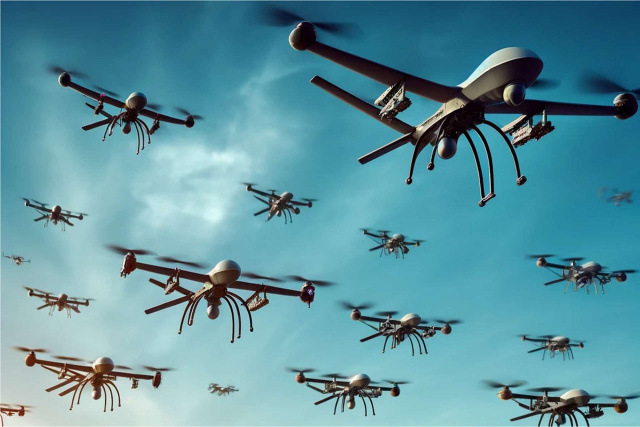
London, UK – May 30, 2024—In a bold move to fortify NATO’s eastern border against potential Russian provocations, Latvian President Edgars Rinkevičs has proposed the construction of a “wall of drones.”
This initiative aims to counteract threats, including Russian President Vladimir Putin’s exploitation of migration crises. Rinkevičs shared these plans in an exclusive interview with The Times during his recent visit to the United Kingdom.
Earlier this week, a significant agreement was reached among six NATO countries—Norway, Finland, Estonia, Latvia, Lithuania, and Poland—to establish this drone defense system.
The coalition’s strategy is a direct response to escalating tensions and perceived threats from Russia. Rinkevičs warned of a resurgence of Cold War-era hostility, underscoring the necessity for robust defensive measures.
“We are witnessing a return to the darkest days of the Cold War,” Rinkevičs stated. He highlighted specific concerns over Russian and Belarusian strategies to manipulate large migrant flows as tools of hybrid warfare, potentially destabilizing NATO’s borders through orchestrated provocations.
The proposed “wall of drones” would primarily serve surveillance and reconnaissance functions. However, Rinkevičs did not exclude the deployment of armed drones if the situation demands.
This multifaceted approach is part of a broader strategy to enhance military infrastructure and readiness along the eastern frontier of NATO, particularly in the Baltic states.
“The drones will provide a critical eye in the sky, enabling us to monitor movements and preempt any hostile actions,” Rinkevičs explained. “Our goal is to ensure that NATO’s eastern border remains secure and that our collective defense posture is uncompromising.”
During his three-day visit to the UK, Rinkevičs toured the Malloy Aeronautics drone factory, a leader in drone technology.
The visit coincided with the UK Defense Department’s introduction of its new drone strategy earlier this year, indicating a shared emphasis on advancing drone capabilities within NATO.
In addition to his industrial tour, Rinkevičs was received by King Charles III at Buckingham Palace, an engagement underscoring the diplomatic ties between Latvia and the UK.
However, scheduled meetings with senior British government officials were canceled due to the ongoing general election.
The Latvian President’s visit and his ambitious proposal have drawn attention to the evolving security dynamics in Eastern Europe.
The “wall of drones” reflects a significant shift towards integrating advanced technology in national defense strategies, aligning with broader NATO efforts to counter emerging threats.
While the specifics of the drone wall’s implementation and operational details remain under discussion, the commitment of the involved nations is clear.
The initiative represents a proactive stance against any attempts by Russia to destabilize the region through unconventional means.
Rinkevičs’ proposal is expected to catalyze further dialogue within NATO regarding the use of unmanned systems in border security and defense. As the geopolitical landscape continues to shift, innovative solutions like the “wall of drones” could become vital components of NATO’s defensive architecture.
In the face of potential aggression and hybrid threats, the unity and technological prowess of NATO’s member states stand as a robust deterrent, reaffirming their commitment to collective security and stability in the region.
This article was created using automation technology and was thoroughly edited and fact-checked by one of our editorial staff members